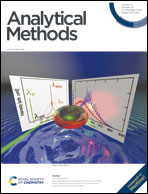Dynamic mechanics of HK-2 cell reaction to HG stimulation studied by atomic force microscopy
Abstract
Renal tubular cell injury by exposure to high glucose (HG) stimulation mainly accounts for diabetic nephropathy (DN). To understand the mechanism of injury by HG, quantitative characterization has commonly focused on the cells that are already impaired, which ignores the signals for the process of being injured. In this study, the architecture and morphology of HK-2 cells were observed dynamically by multiple imaging methods. AFM (atomic force microscopy)-based single-cell force spectroscopy was employed to investigate the dynamic mechanics quantitatively. The results showed that the Young's modulus increased continuously from 2.44 kPa up to 4.15 kPa for the whole period of injury by HG, while the surface adhesion decreased from 2.43 nN to 1.63 nN between 12 h and 72 h. In addition, the actin filaments of HK-2 cells exposed to HG depolymerized and then nucleated with increasing Young's modulus. The absence of cell pseudopodia coincided with the reduced cell adhesion, strongly suggesting close relationships between the cell architecture, morphology and mechanical properties. Furthermore, the stages of cell reactions were identified and assessed. Overall, the dynamic mechanics of the cells facilitate the identification of injured cells and the assessment of the degree of injury for accurate diagnoses and treatments.



 Please wait while we load your content...
Please wait while we load your content...